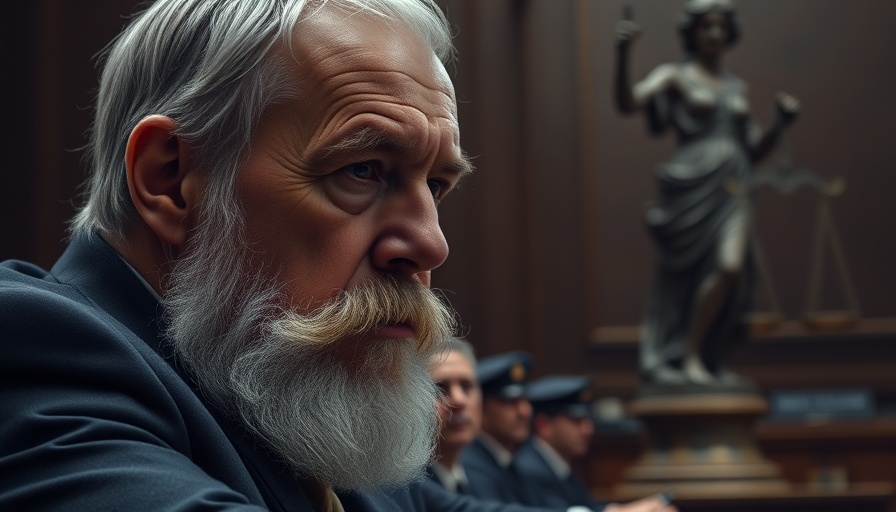
R.C. Curtis Trial: A Community’s Painful Journey
The capital murder retrial of R.C. Curtis has captivated the San Antonio community as it unfolds a story that mixes heartbreak, justice, and the enduring search for truth. With a charged atmosphere, the trial surrounding the brutal death of 75-year-old Paula Boyd, a beloved local, has renewed discussions about public safety, legal integrity, and communal healing.
What Led to the Retrial?
This retrial is not just a typical court case; it is the culmination of a series of legal misadventures that began nearly a decade ago. Curtis was initially charged with Boyd's murder in 2015, but a mistrial in November 2021 over new evidence prompted a retrial. Such delays disturb the collective remembrance of a life taken too soon and put the justice system's efficacy under scrutiny. The question many ask–whether the legal system can adequately provide closure–remains at the forefront.
A Deep Dive into Boyd's Legacy
As the trial progresses, prosecutor Daryl Harris has emphasized the vibrant life of Paula Boyd, known for her warm grin and lasting connections at H-E-B. Firefighters, friends, and community members have taken to the stand, sharing stories that highlight her as a grandmother figure to many. This emotional appeal serves both as a tribute to her life and a stark reminder of her tragic fate.
The Defense's Stance: Is It Enough?
Defending Curtis is a high-stakes game. His lawyer, Charles Bunk, passionately asserted during closing arguments that the jury holds Curtis's life in their hands. He implored jurors to disregard the prosecution's narrative, portraying Curtis not as a murderer, but as a misunderstood man unjustly accused. This appeals not only to legal principles but also to the moral dilemmas surrounding criminal accusations and the burden of proof.
Public Sentiment and Community Reflection
The emotional toll on the San Antonio community resonates deeply as many wrestle with the unsettling nature of the case. Boyd's murder has created ripples of anxiety, triggering dialogues about safety and crime prevention. Local conversations have emerged around the effectiveness of law enforcement and support for victims' families, showcasing how one tragedy can bind a community while exposing its vulnerabilities.
The Role of Media and Transparency
The livestreaming of the trial reflects a modern transformation in media ethics and public scrutiny. The need for transparency in judicial proceedings has been highlighted, drawing citizens into the heart of the courtroom drama as they navigate the complex emotions tied to social justice issues. This access allows communities not only to witness but to engage with the justice process in ways previous generations could only dream of.
The Broader Implications for Justice
As the jury deliberates, the outcome of the trial could have broader implications on how capital cases are handled in Texas and beyond. If convicted, Curtis faces life without parole, a decision that raises questions about the constructs of justice, the death penalty, and those systematically affected by crime. The case embodies a critical examination of how society approaches crime, retribution, and rehabilitation.
In the end, the verdict in R.C. Curtis's capital murder retrial will not only conclude a particular chapter in a local narrative but will also reflect on lessons learned, both painful and profound, about human life and justice's fragile nature.
 Add Element
Add Element  Add Row
Add Row 



Write A Comment